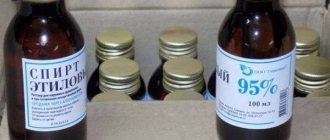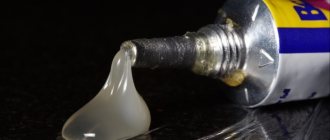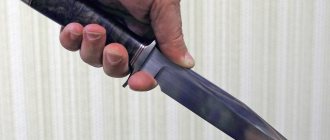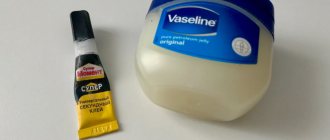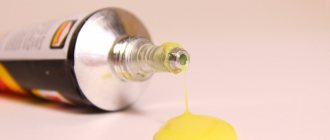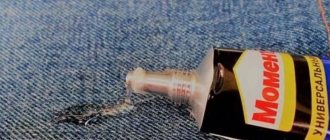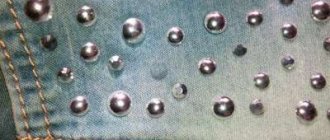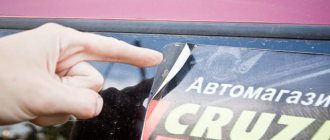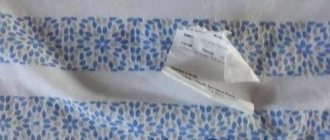One awkward movement of the hand, and a stubborn glue stain appears on your outer clothing. It is possible to cope with it, but this will require knowledge, without which there is a high risk of tissue damage.
For information on how to quickly and safely remove glue (stationery glue, hot glue, mouse glue, silicone glue, etc.) from clothes at home, read the article.
How to remove glue from clothes using an iron?
How to remove glue stains with an iron
- The product requiring cleaning is laid out on an ironing board or other horizontal surface.
- Place a clean cotton cloth under the contaminated area. ...
- The iron is heated to the highest possible temperature and, with light movements, is lowered to the place where the adhesive spot is located.
Interesting materials:
Is it possible to find an iPhone if there is no Internet? Is it possible to find a lost iPhone if it is turned off? Is it possible to find a lost iPhone? Is it possible to find a job in Germany without knowing the language? Is it possible to find truffles in Russia? Is it possible to find a recording of a conversation on Skype? Found SNILS how to find the owner? Where can I find OKTMO in the documents? Where can I find the SZM report? Where can I find a job?
Classic methods
Standard means of removing stationery or silicone glue from clothing include regular vegetable oil. More aggressive compounds (“Superglue”, “Moment”) are eliminated with the help of solvents, special substances such as “Anti-glue” and their analogues. When performing cleaning, it is recommended to consider a number of key conditions:
- Try to remove the adhesive immediately after it gets on the fabric. The more time passes from this moment, the more firmly it will become established. Instant cleaning is quite simple. The composition that got on your clothes 2 or 3 days ago may remain on it forever.
- The cleaning method and components used may vary depending on the type of adhesive. Universal methods will do, but their effect will be minimal. Therefore, it is recommended to use only proven and reliable instructions presented below.
- The properties of the fabric on which the glue has come into contact should be taken into account. For example, when cleaning jeans with alcohol, a light stain will remain on the surface. The composition that removes contaminants is capable of dissolving synthetic fibers. Do not use components intended for cleaning white fabrics on colored fabrics. Together with the stain, they can “corrode” the paint of the material.
- If after the cleaning process is completed, traces of glue are not completely removed, do not repeat the procedure again. The material must dry. Otherwise, as a result of prolonged exposure to an aggressive substance, the tissue may suffer.
Methods for removing glue from clothes Source sdelai-lestnicu.ru
Rules for cleaning the heat gun
In order for a tool to work for a long time and properly, it must be chosen wisely. In addition to the fact that you don’t need to buy a cheap hot-melt gun, you also need to carefully monitor the quality of the glue you buy. At the time of work, you must follow the instructions of the manufacturer of the tool and glue. From time to time, the instrument will need preventive measures, and sometimes deep cleaning. It is important to understand one thing - completely clearing the inside of the gun nozzle of glue is impossible and even useless. The nozzle is cylindrical and made of solid metal, so excess glue simply dries there until the next heating. But there are ways to do a safe surface cleaning:
Freezing
Some types of hot melt adhesives are unstable at low temperatures (see instructions). In the cold they become brittle, break down and crumble. The item from which the hot-melt adhesive is being removed must be placed in the freezer and waited for some time. Under the influence of negative temperatures, the glue will collapse and can be separated by scraping and shaking.
The method is not very convenient. Not every item can be placed in the freezer. Many hot melt adhesives are resistant to negative temperatures.
For example, ADTEK adhesives are guaranteed to work down to -20℃ and are therefore used for labeling frozen foods.
How can you remove glue stains at home?
Universal solvents are compounds that help get rid of all types of glue, regardless of their origin. They must be used carefully, since they are based on caustic substances.
The product has a gel consistency, thanks to which it does not spread over the surface of the fabric and does not stain clothes.
Mode of application:
- Place a paper napkin under the back of the soiled item.
- Apply the composition to the stain.
- Cover it on top with another napkin and leave overnight.
- Put away napkins, wash things.
Other universal compositions include:
- Acetone. The substance has a pungent odor, so it should only be used in areas with good ventilation. To avoid damaging the fabric, first test the product on an inconspicuous area. Moisten a cotton pad with acetone and use it to treat the stain. You cannot leave it on the fabric for a long time.
- Nail polish remover . It contains acetone, but in a lower concentration, so when removing traces of persistent glue, it can be left on the item for 10-15 minutes. Remove dirt using a stiff brush, for example, the back of a sponge.
- Petrol. It has a fatty base and a pungent odor. Therefore, it is recommended to use it outdoors. The composition is applied to gauze folded in several layers, which is used to systematically treat stains on clothing.
- Dimexide. This is a pharmaceutical solution that is used for medicinal purposes. To remove sticky traces you will need a 99% concentrate. To remove fresh stains, simply apply Dimexide to a napkin. It wipes away the dirt until it disappears completely. If the glue has dried, make a lotion, keeping the solution on the fabric for no longer than 5-15 minutes.
Instructions for cleaning clothes
This instruction contains several ways to remove glue from clothes. The principle of operation differs depending on the type of adhesive composition. Any deviation from the listed actions can aggravate the situation and irreversibly damage the fabric.
Polyvinyl acetate (PVA)
Polyvinyl acetate glue, in comparison with “Moment”, “Titanium” or “Superglue”, is cleaned with minimal effort. When it gets on the fabric, it leaves light stains. It can be easily removed, no matter how much time has passed since the first contact. The procedure for removing uncured PVA glue is as follows:
- Carefully turn the item inside out so as not to stain adjacent areas.
- Place the stain under running hot (50-60°C) water and leave for a minute.
- Sprinkle with hand wash powder and rub it into the fabric.
- Place in the washing machine and turn on the “Rinse” mode with hot water.
Cleaning of hardened PVA glue is carried out using the following steps:
- Soak a cotton pad with pure alcohol.
- Gently apply to the stain and make sure it disappears.
Important! Alcohol-based compounds should not be used on dark jeans. It will no longer be possible to restore burnt paint. The method can be used on most fabrics.
Fresh stains can be removed with washing powder Source sdelai-lestnicu.ru
The best remedy against PVA glue Source xpersona.ru
Removing hardened PVA glue from delicate fabric (viscose, organza, chiffon):
- Place the fabric in a bag and place in the freezer for 2-3 hours. Polyethylene is needed so that the material does not get dirty and does not absorb the smell of food.
- Take it out and make sure the glue is frozen.
- Rub lightly. The stain should peel off and crumble. All that will remain are small pieces stuck between the fibers of the fabric.
- Place in the washing machine and wash normally.
Liquid glass
This concept means an aqueous alkaline solution of glassy silicates or silicate glue. According to its chemical characteristics, it is classified as an aggressive substance, the stains of which are much more difficult to remove from clothing than traces of PVA glue. The molecules of the composition are firmly “eaten” into the structure of the fabric so that in many cases it is no longer possible to separate them. A positive result is only possible on dense tissues. This is done as follows:
- Pour 2 liters into a container. warm water, add 200 g of washing powder.
- Soak soiled clothes for 3-3.5 hours.
- Remove the stain with a stiff brush.
- Place in the washing machine and turn on the “Rinse” mode.
A solution of water and soda for stains Source womenstalk.ru
Household chemicals
When used correctly, professional chemistry allows you to return the product to its original appearance. It is used only after testing on a piece of fabric. Any factory product contains aggressive components. They can change the color and structure of the fabric.
The Dutch company produces a wide range of cleaning products. Among them is a liquid sticker remover. A 300 ml bottle costs about 400 rubles. The liquid removes traces of labels, tape, glue and oil stains.
Special cleaners
To quickly and efficiently remove hot-melt adhesive from the surface and clean equipment, special cleaners are used. On the Mebax company website, such materials can be viewed in the “Accessories” section. There are hot and cold hot melt glue cleaners. Cleaners are made from organic natural raw materials. They have a citrus smell, signaling the presence of cleaning product vapors in the air.
The cold cleaner is designed to remove hot-melt adhesive from work surfaces and tools. It is applied to hot melt glue using a rag or rag. Within a few minutes, the adhesive destructures and is then removed mechanically.
To clean equipment in inaccessible places (internal space of the heating chamber, internal walls of hoses), a hot-applied cleaner is used. Removal of adhesive residues is carried out by recirculating a hot cleaner through the melting chamber and adhesive lines.
Qualified advice on organizing cleaning of glue equipment and maintaining it in good condition can be obtained from the managers of the Mebax company.
Special means
On the shelves of hardware stores you can see a sufficient number of special products that can be used to remove glue from jeans.
When choosing an anti-glue product, you must carefully study the manufacturer’s label with information about what surfaces the product is intended for, the rules for its use, and the expiration date.
Top 3 most effective store-bought glue stain removers:
- Super Moment Anticley . This product is applied to the stain, after which the contaminated area is covered with a napkin folded in half (both on the front and back of the clothing).
The jeans are left in this form for at least twelve hours, after which the napkins are removed, and the area treated with anti-glue is thoroughly washed under running water. The average cost of Super Moment Anticley is 105 rubles.
- Anti-glue Strength is a composition capable of removing both liquid and already hardened glue from denim. It is enough to apply a few drops of anti-glue to the stain, wait ten hours, and then remove the dissolved glue particles with a napkin. The average cost is 40 rubles.
- The Secunda remover is a product from a Chinese manufacturer. It is distinguished by its ability to remove even old glue stains from fabric in five to six hours. It is enough to apply the product to the stain, cover the stain with absorbent paper or a cloth and leave the item alone for a while. After five to six hours, the gins are rinsed under running water, easily removing any remaining adhesive. The average cost of the Secunda glue remover is 70 rubles.
